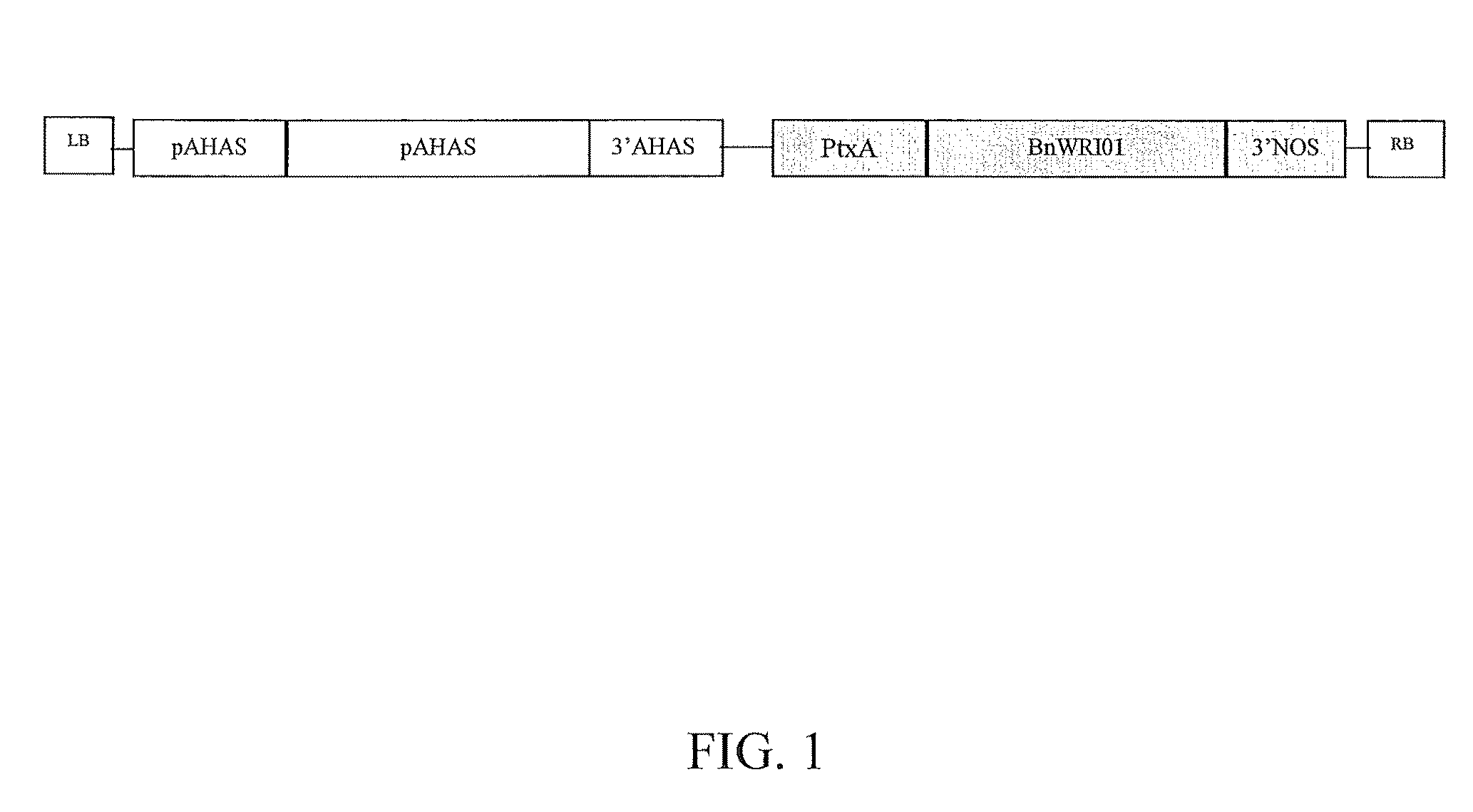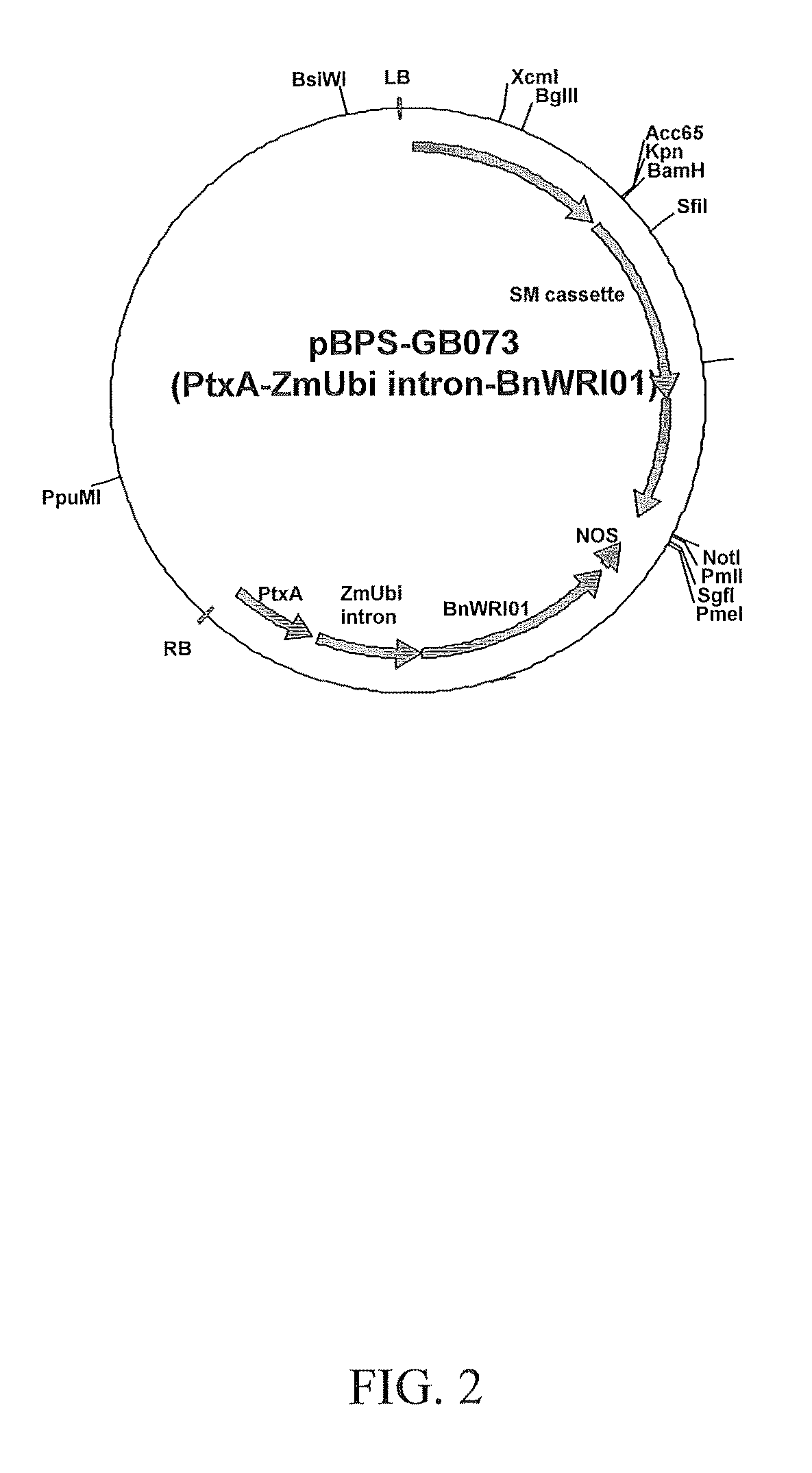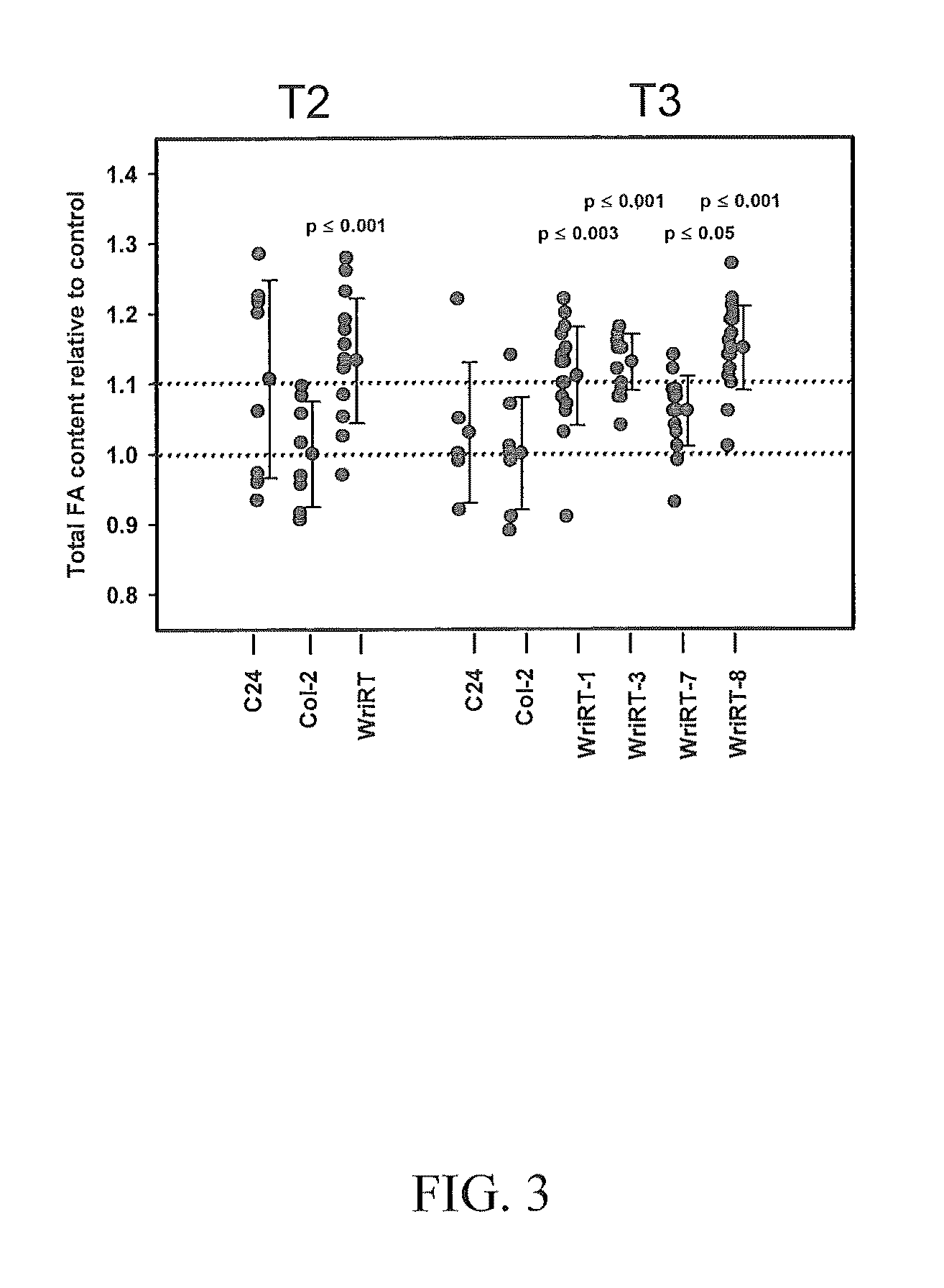Nucleic acid molecules encoding wrinkled1-like polypeptides and methods of use in plants
a technology of nucleic acid molecules and wrinkled1like polypeptides, applied in the field of gene engineering of plants, can solve the problems of affecting the expression of genes involved in sugar metabolism, and achieve the effects of increasing the number and/or size of one or, and reducing the number of seed clones
- Summary
- Abstract
- Description
- Claims
- Application Information
AI Technical Summary
Benefits of technology
Problems solved by technology
Method used
Image
Examples
example 1
General Processes
a) General Cloning Processes:
[0114]Cloning processes such as, for example, restriction cleavages, agarose gel electrophoresis, purification of DNA fragments, transfer of nucleic acids to nitrocellulose and nylon membranes, linkage of DNA fragments, transformation of Escherichia coli and yeast cells, growth of bacteria and sequence analysis of recombinant DNA were carried out as described in Sambrook et al. (1989, Cold Spring Harbor Laboratory Press: ISBN 0-87969-309-6) or Kaiser, Michaelis and Mitchell (1994, “Methods in Yeast Genetics,” Cold Spring Harbor Laboratory Press: ISBN 0-87969-451-3).
b) Chemicals:
[0115]The chemicals used were obtained, if not mentioned otherwise in the text, in p.a. quality from the companies Fluka (Neu-Ulm), Merck (Darmstadt), Roth (Karlsruhe), Serva (Heidelberg), and Sigma (Deisenhofen). Solutions were prepared using purified, pyrogen-free water, designated as H2O in the following text, from a Milli-Q water system water purification plan...
example 2
Total DNA Isolation from Plants
[0121]The details for the isolation of total DNA relate to the working up of one gram fresh weight of plant material.
[0122]CTAB buffer: 2% (w / v) N-cethyl-N,N,N-trimethylammonium bromide (CTAB); 100 mM Tris HCl pH 8.0; 1.4 M NaCl; 20 mM EDTA. N-Laurylsarcosine buffer: 10% (w / v) N-laurylsarcosine; 100 mM Tris HCl pH 8.0; 20 mM EDTA.
[0123]The plant material was triturated under liquid nitrogen in a mortar to give a fine powder and transferred to 2 ml Eppendorf vessels. The frozen plant material was then covered with a layer of 1 ml of decomposition buffer (1 ml CTAB buffer, 100 μl of N-laurylsarcosine buffer, 20 μl of (3-mercaptoethanol and 10 μl of proteinase K solution, 10 mg / ml) and incubated at 60° C. for one hour with continuous shaking. The homogenate obtained was distributed into two Eppendorf vessels (2 ml) and extracted twice by shaking with the same volume of chloroform / isoamyl alcohol (24:1). For phase separation, centrifugation was carried out...
example 3
β Isolation of Total RNA and poly-(A)+ RNA from Plants
[0124]Arabidopsis thaliana
[0125]For the investigation of transcripts, both total RNA and poly-(A)+ RNA were isolated. RNA was isolated from siliques of Arabidopsis plants according to the following procedure:
RNA preparation from Arabidopsis Seeds—“Hot” Extraction:
1. Buffers, Enzymes, and Solutions
[0126]2 M KCl[0127]Proteinase K[0128]Phenol (for RNA)[0129]Chloroform:Isoamylalcohol[0130](Phenol:choloroform 1:1; pH adjusted for RNA)[0131]4 M LiCl, DEPC-treated[0132]DEPC-treated water[0133]3M NaOAc, pH 5, DEPC-treated[0134]Isopropanol[0135]70% ethanol (made up with DEPC-treated water)[0136]Resuspension buffer:[0137]0.5% SDS, 10 mM Tris pH 7.5, 1 mM EDTA made up with DEPC-treated water as this solution can not be DEPC-treated[0138]Extraction Buffer:[0139]0.2 M Na Borate[0140]30 mM EDTA[0141]30 mM EGTA[0142]1% SDS (250 n1 of 10% SDS-solution for 2.5 ml buffer)[0143]1% Deoxycholate (25 mg for 2.5 ml buffer)[0144]2% PVPP (insoluble—50 m...
PUM
| Property | Measurement | Unit |
|---|---|---|
| pH | aaaaa | aaaaa |
| pH | aaaaa | aaaaa |
| time | aaaaa | aaaaa |
Abstract
Description
Claims
Application Information
 Login to View More
Login to View More - R&D
- Intellectual Property
- Life Sciences
- Materials
- Tech Scout
- Unparalleled Data Quality
- Higher Quality Content
- 60% Fewer Hallucinations
Browse by: Latest US Patents, China's latest patents, Technical Efficacy Thesaurus, Application Domain, Technology Topic, Popular Technical Reports.
© 2025 PatSnap. All rights reserved.Legal|Privacy policy|Modern Slavery Act Transparency Statement|Sitemap|About US| Contact US: help@patsnap.com



